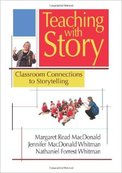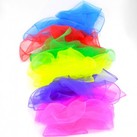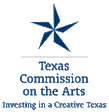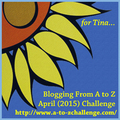
In my 33 years of teaching, 9 years were as a kindergarten teacher so I brought that experience with me along with my storytelling experiences and resources.
A fabulous book resource that I highly recommend is Teaching with Story: Classroom Connections to Storytelling by Margaret Read MacDonald, Jennifer MacDonald Witman, and Nathaniel Forrest Whitman (all in the family). PreK4SA bought this book for all of the participants of our storytelling consortium.
This book is filled with age appropriate stories and activities to follow in the curriculum so the youngsters can interact through predictable lines in the story, rhymes, role play, puppetry, and story draw.
What is story draw? Teaching with Story use a wonderful old drawing story of "Tommy and Sally." As you tell a tale, you are drawing features of the story and by the end of the tale you have created a picture of an object related to your story. The teachers and their students LOVED this tale found on page 145. I changed their names to "Tomas and Sara" and you could change the names also along with the two letters used to begin the simple tale. We practiced as a group retelling this drawing story before the teachers felt comfortable taking it back to their classrooms. Many of the workshop participants came back for all 4 of the sessions with wonderful stories of their storytelling successes in their classes.
Story "Matters"-Solid, Liquid, Gas

Solid: Ice
1. Students hold one or two scarves. Make sure they've had experience with the flow of a scarf by playing soft ocean music for example and having the kids become waves in the ocean.
2. Line of your kids in an array of 4x4 or 4x3, whatever works with the amount of kids. Hands are up and the rows are tight with very little movement - you are a solid. Tell the kids that they are the icecubes in a pan.
Liquid: Water
3. Eventually the icecubes that are left out begin to melt into….a liquid (or water). Now you don't really take on any shape except that of the pot but you are able to flow and move around, unlike yourself as a solid. (The kids can now move around freely moving their scarves gently. I ask the kids to not touch each other)
Hot Water
4. "Time for some hot tea," I say to everyone. Watch me turn up the stove temperature knob. "Oh boy, it's getting hot in the pan, right?" I ask the kids. It's making you move much faster than before. Now the kids have a blast walking very fast, waving their arms at an alarming rate and trying very hard not to bump into each other.
Gas - evaporation
5. Oh my, look at you little molecules now! You're turning into steam and evaporating into the air - WOW! What a sight. (Ha - the kids love this part - they are now on their tippy toes floating in the air using their scarves and drifting around the room. I know, they're not REALLY floating but it sure looks that way. Bye bye molecules, for now!
Do you think the kids will have something to talk about with their parents after that fun day? Story and science with a bit of math thrown in - pretty "cool!"
Try this out yourself. It doesn't matter what grade you teach - all kids love to role play! Vocabulary was enriched (molecules, solid, liquid, gas, flow, float, etc.); listening skills were imperative to interact with the story of the melting ice cube; circle time talk after this fun activity will be filled with fun discussion among the kids!





 RSS Feed
RSS Feed